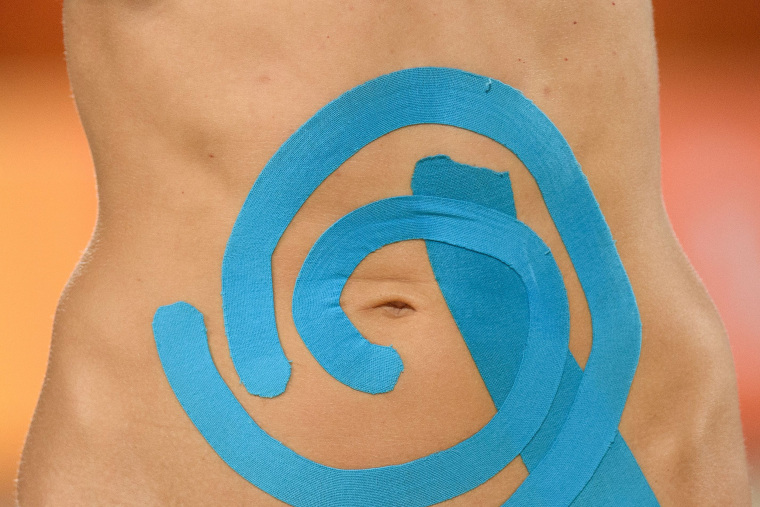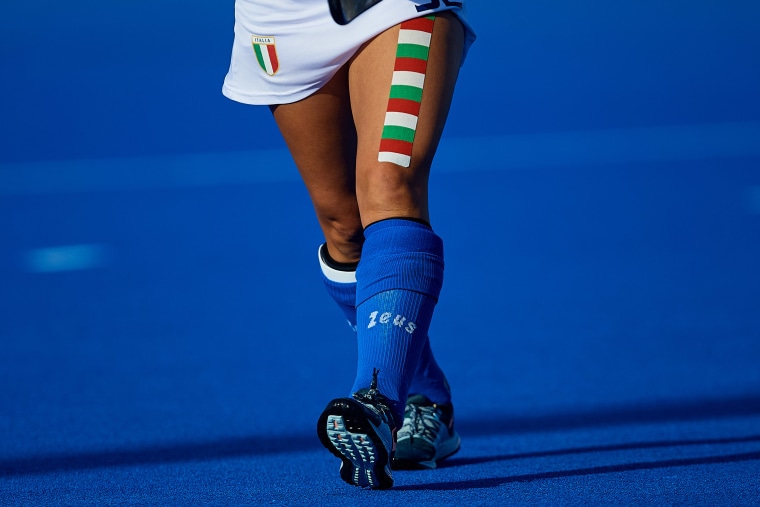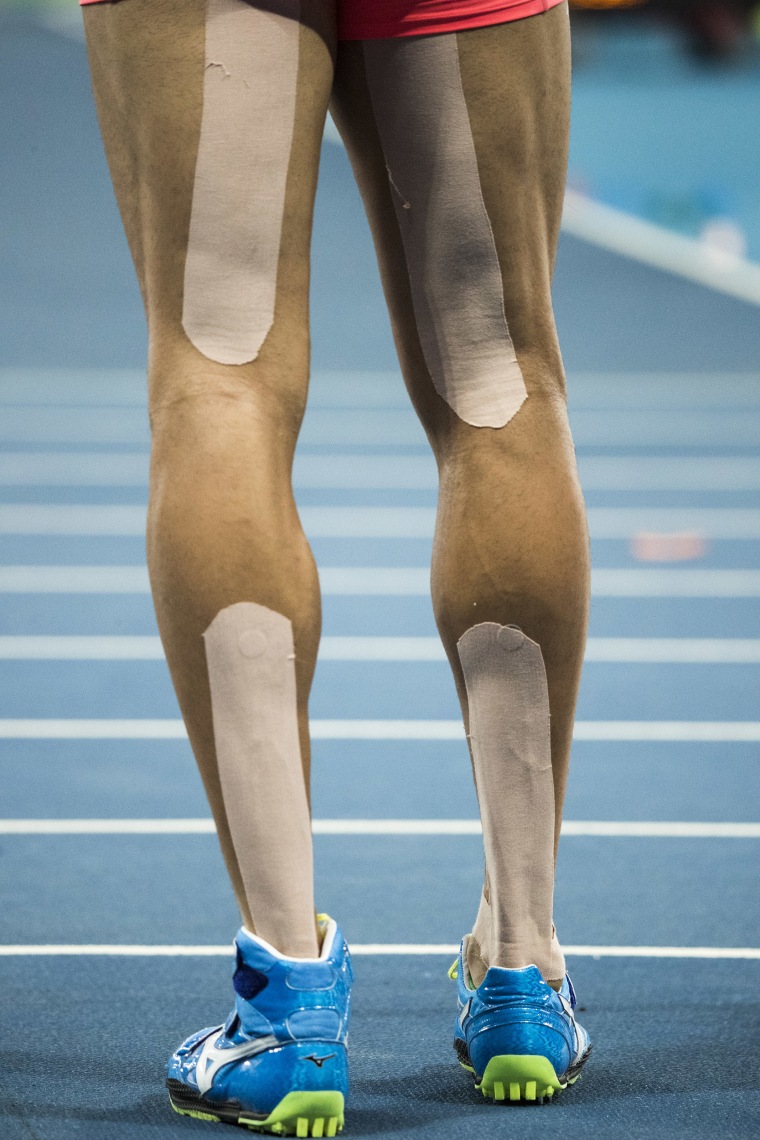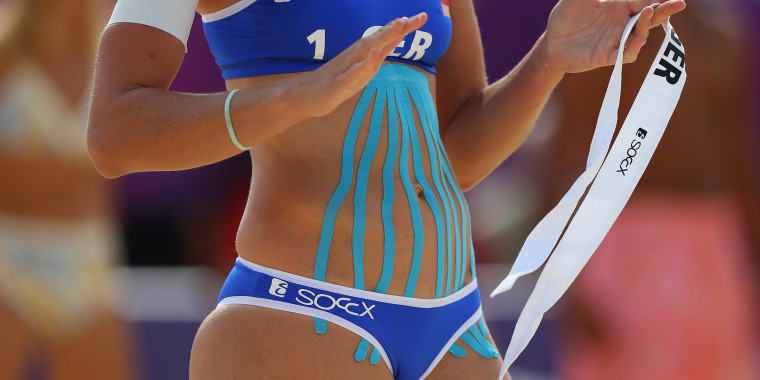German beach volleyball player Katrin Holtwick might have been more internationally famous for the aquamarine lines of tape trailing down her midriff than her serves and spikes at the London Olympics. But the 28-year-old Olympian wasn’t making a fashion statement; she used the tape to alleviate pain and perform better. In theory, anyway.
Kinesiology tape, or kinesio tape for short, is a flexible, cloth tape, which athletic trainers apply on achy muscles to relieve pain or to encourage muscles to work more efficiently. People specifically trained to apply the tape place it over the muscles in precise ways; the tape exerts force on the muscles so they are more synchronized.
“It’s cotton tape that has some sort of adhesive that mimics the elasticity of the skin,” said Dr. Aaron Mares, an assistant professor of orthopaedic surgery at UPMC Sports Medicine and associate team physician for the University of Pittsburgh football team.

But aficionados of kinesio tape aren't all elite, Olympic-level athletes -- amateur runners and cyclists, for example, use the stuff, too.
Fans of kinesio tape say it reduces pain by increasing blood flow and encouraging lymphatic drainage. It's also intended to help the muscle work correctly after an injury. Say a beach volleyball player has a sore muscle in her shoulder. She might serve a bit differently because she’s using her other muscles to overcompensate for the tender one. The kinesio tape — again, in theory — should reduce the inflammation that causes pain and encourage her muscles to move properly.

“If there is a structural damage like a torn ACL or meniscus, it’s not going to be effective; after all, it’s tape,” explains Dr. David Geier, an orthopaedic surgeon at the Medical University of South Carolina and director of its sports medicine program.
Currently, there is not a lot of research indicating that kinesio tape actually works — but if athletes believe it helps, that in itself might be enough. It could be an example of the placebo effect, the phenomenon when people feel better after taking a pill, even though it might be inactive. Traditional taping — such as what’s used for a sprained ankle — and kinesio tape helps people with proprioception, a person’s perception of where a body part exists in relation to their body. Even just that simple act of re-familiarization with the athlete's own body may help give them the feeling that their body is aligned and whole — and ready to compete.

“[Kinesio tape] is not something that harms the patients. If athletes feel this may help benefit them from a performance standpoint, I have no problems with them trying it,” says Mares.
But kinesio tape alone probably won't make injuries go away, Grier adds. He recommends tending to sports injuries with remedies including physical therapy, icing and taking over-the-counter pain relievers, like aspirin or ibuprofen.
